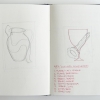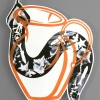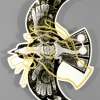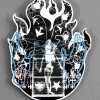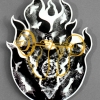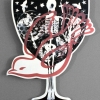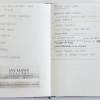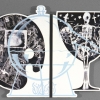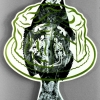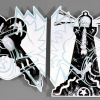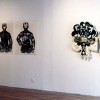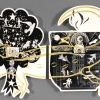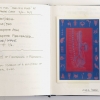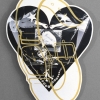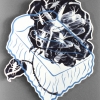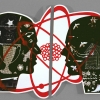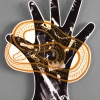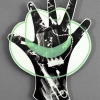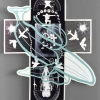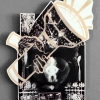Composite Cut-Outs
Elizabeth Bryant’s works “cross traditional categories and investigate meaning. Composite (Retort) is a two part image on shaped masonite, mounted an inch or so away from the wall. On the simplest level, it presents a painter’s palette and a goblet on either side of a chemist’s retort. All three forms are shown as silhouettes. The retort is depicted with broad, highly stylized lines, spray-painted on top of other objects. The goblet and palette are shaped photograms, densely packed with familiar imagery such as fish, birds, crucifixes, skeletons flash cards and baseball players. These smaller items act as a random collection of cultural signs because of their familiar significances. Appropriately, most of them are also photogram silhouettes with a few drawn details, encouraging the viewer to recognize them as symbols.
The larger images allude to actual or allegorical distillations by chemists, vintners and painters – three groups that are popularly associated with alchemy. …All three… seek to create a product whose value is far greater than the sum of its parts.
This alchemic change is what Bryant seeks for her own works. As she writes, she wants to ‘transform the myriad signs and symbols in our culture from generic stereotypes into images with multiple layers of meaning. By evoking multiple associations, this composite imagery reorders the logical reading of universal signs.’”1
Margaret Lazzari, “Seeking Alchemic Change,” Artweek, May 7, 1988.

